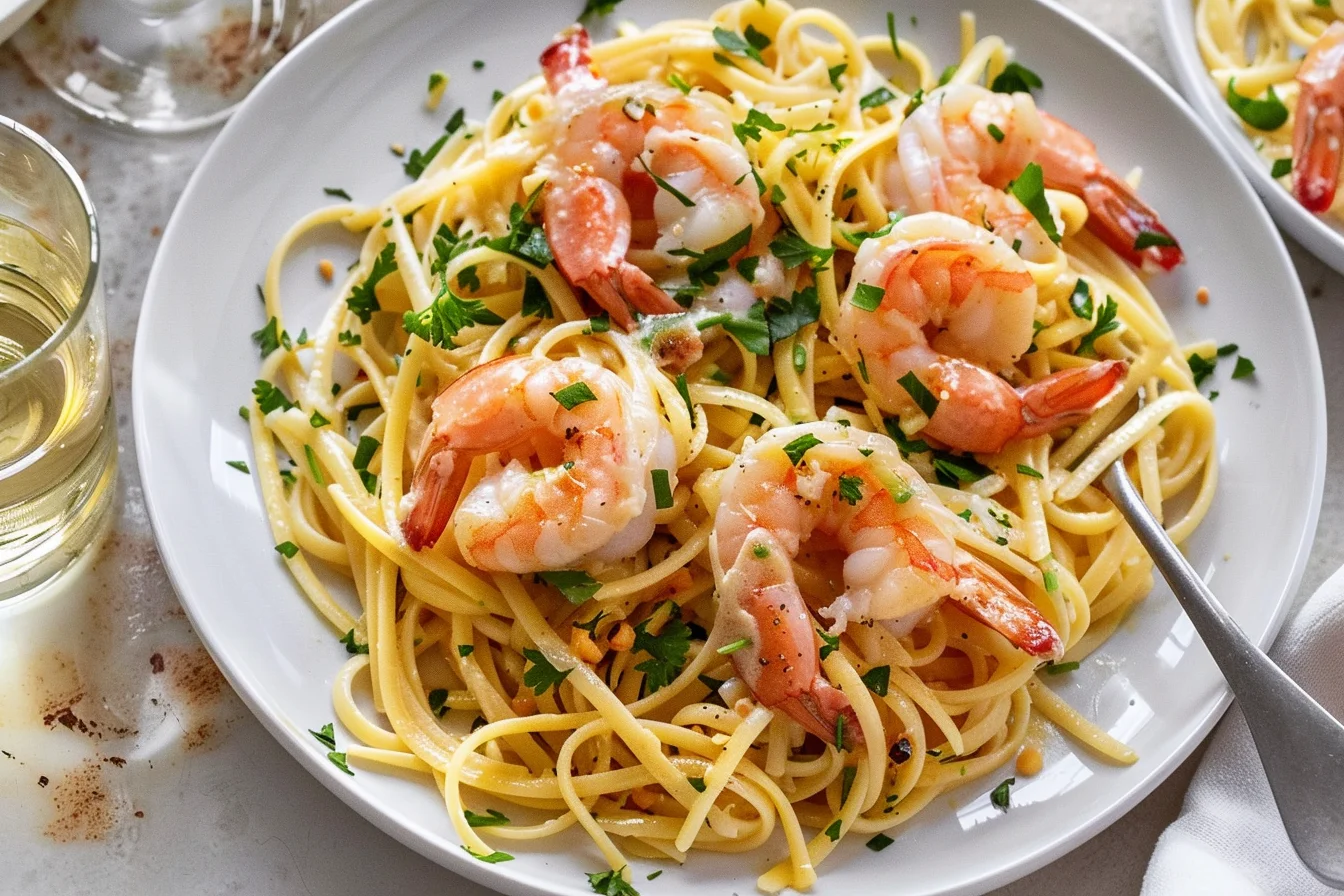Linguini: A Guide to This Classic Pasta
When it comes to pasta, linguini is a popular choice for its versatility and its ability to pair with a variety of sauces. Whether you prefer it with olive oil and garlic, or something richer like Alfredo, this pasta adapts well to any meal.
In this guide, we’ll explore what makes it unique, how to cook it perfectly, and the best ways to enjoy it.
What is Linguini and Why Is It So Popular?
Linguini (also spelled “linguine”) is a long, flat pasta that’s wider than spaghetti but narrower than fettuccine. The name means “little tongues” in Italian, a nod to its subtle shape. It’s frequently served with seafood or light sauces that complement its texture.
Unlike thicker types of pasta, it excels with sauces that coat but don’t overwhelm it. Whether paired with clams, shrimp, or a fresh tomato-based sauce, this pasta adapts beautifully to many meals.
Why Linguini Is Perfect for Various Dishes
There are several reasons why this pasta is a fantastic choice for your next meal.
1. Ideal for Light Sauces
The flat shape makes it ideal for lighter sauces. Its surface holds onto olive oil, butter, or garlic-based dressings, allowing the sauce to enhance the dish.
2. Quick to Cook
Another great feature is its fast cooking time—just 8-10 minutes for dried varieties, making it a go-to for quick dinners.
3. Pairs Well with a Variety of Ingredients
Thanks to its neutral flavor, this pasta works well with ingredients like tomatoes, fresh herbs, and seafood, making it incredibly versatile.
4. Elegant for Special Occasions
Its slender, flat strands add an elegant touch to any meal, making even simple dishes look refined.
Key Ingredients for Great Linguini Dishes
To make the most of your pasta dishes, start with high-quality ingredients:
1. Pasta
Whether dried or fresh, choose high-quality pasta for the best texture and flavor. Fresh varieties cook faster, while dried ones offer a firm bite.
2. Olive Oil
Good extra virgin olive oil enhances the flavors of many recipes, especially in lighter dishes.
3. Garlic
Fresh garlic is essential for many sauces, offering a savory base.
4. Lemon
Lemon juice or zest brightens up seafood dishes in particular.
5. Herbs
Fresh parsley, basil, or thyme bring freshness to the dish.
6. Parmesan
A sprinkle of Parmesan adds depth to any pasta meal.
7. Seafood
Shrimp, clams, or mussels are perfect for creating a satisfying, light pasta dish.
Dietary Substitutions for Linguini Dishes
Adapting your dish to fit dietary needs is easy. Here are a few options:
Gluten-Free:
Gluten-free alternatives made from rice or quinoa flour are widely available and provide a similar texture.
Low-Carb:
Zucchini noodles or shirataki noodles can be used for a low-carb alternative.
Vegan:
Most dried pasta is naturally vegan. Substitute cheese with nutritional yeast and use olive oil instead of butter.
Dairy-Free:
For dairy-free versions, omit cheese or use dairy-free alternatives in your dishes.
How to Cook Linguini Perfectly
Cooking pasta properly ensures the best texture. Follow these steps:
Step 1: Boil Water
Start by bringing a large pot of water to a rolling boil.
Step 2: Salt the Water
Add 1-2 tablespoons of salt per gallon of water to flavor the pasta.
Step 3: Cook to Al Dente
Add the pasta and cook for 8-10 minutes (dried) or 3-5 minutes (fresh).
Step 4: Test for Doneness
Taste a strand to ensure it’s firm but cooked through.
Step 5: Drain and Save Pasta Water
Once done, drain the pasta, saving a cup of water to adjust the sauce if needed.
Step 6: Toss with Sauce
Immediately toss the pasta with your sauce so it absorbs the flavors.
Step 7: Serve Right Away
Serve immediately, garnished with herbs or cheese if desired.
Advanced Tips for Cooking Linguini
Once you’ve mastered the basics, here are some tips to enhance your dishes:
Use Pasta Water to Thicken the Sauce
Reserve some pasta water when draining to help thicken the sauce.
Finish in the Sauce
Toss the pasta with the sauce during the last minute of cooking for better flavor.
Add Protein for a Complete Meal
Adding shrimp, chicken, or sausage makes it heartier and complements the pasta well.
Experiment with Different Sauces
Don’t just stick to light sauces—this pasta works well with pesto, cream-based sauces, and even spicy tomato options.
Storing and Reheating Linguini: Best Practices
Proper storage ensures that you can enjoy leftovers.
Refrigeration:
Store leftovers in an airtight container for up to 3 days. Reheat by tossing it in a skillet with some water or sauce.
Freezing:
For longer storage, freeze cooked pasta in a freezer-safe container for up to 2 months. Thaw overnight in the fridge before reheating.
Nutritional Value of Linguini
Here’s the nutritional breakdown for a 2-ounce serving of traditional pasta:
- Calories: 200-220
- Protein: 7-8 grams
- Carbohydrates: 42 grams
- Fat: 1 gram
- Fiber: 2 grams
Frequently Asked Questions
1. What’s the Difference Between Linguini and Spaghetti?
Linguini is flatter and wider than spaghetti, making it better for light sauces.
2. Can I Make Fresh Linguini Pasta at Home?
Yes, homemade pasta can be made with just flour and eggs. Roll out the dough and cut it into thin, flat strands.
3. What Sauces Work Best with Linguini?
Lighter sauces such as olive oil, garlic, and seafood-based ones are excellent choices, though it can also handle creamy sauces.
4. How Do I Prevent the Linguini Pasta from Sticking?
Stir the pasta right after adding it to boiling water, and toss with olive oil or sauce after draining.
5. Can I Bake Linguini Pasta?
Yes, it works well in baked dishes, but slightly undercook it before baking to avoid mushiness.
By following these tips, you can create a wide range of delicious dishes that are perfect for any occasion. Whether you prefer seafood, light sauces, or creamy options, this pasta’s versatility makes it a staple in any kitchen.
